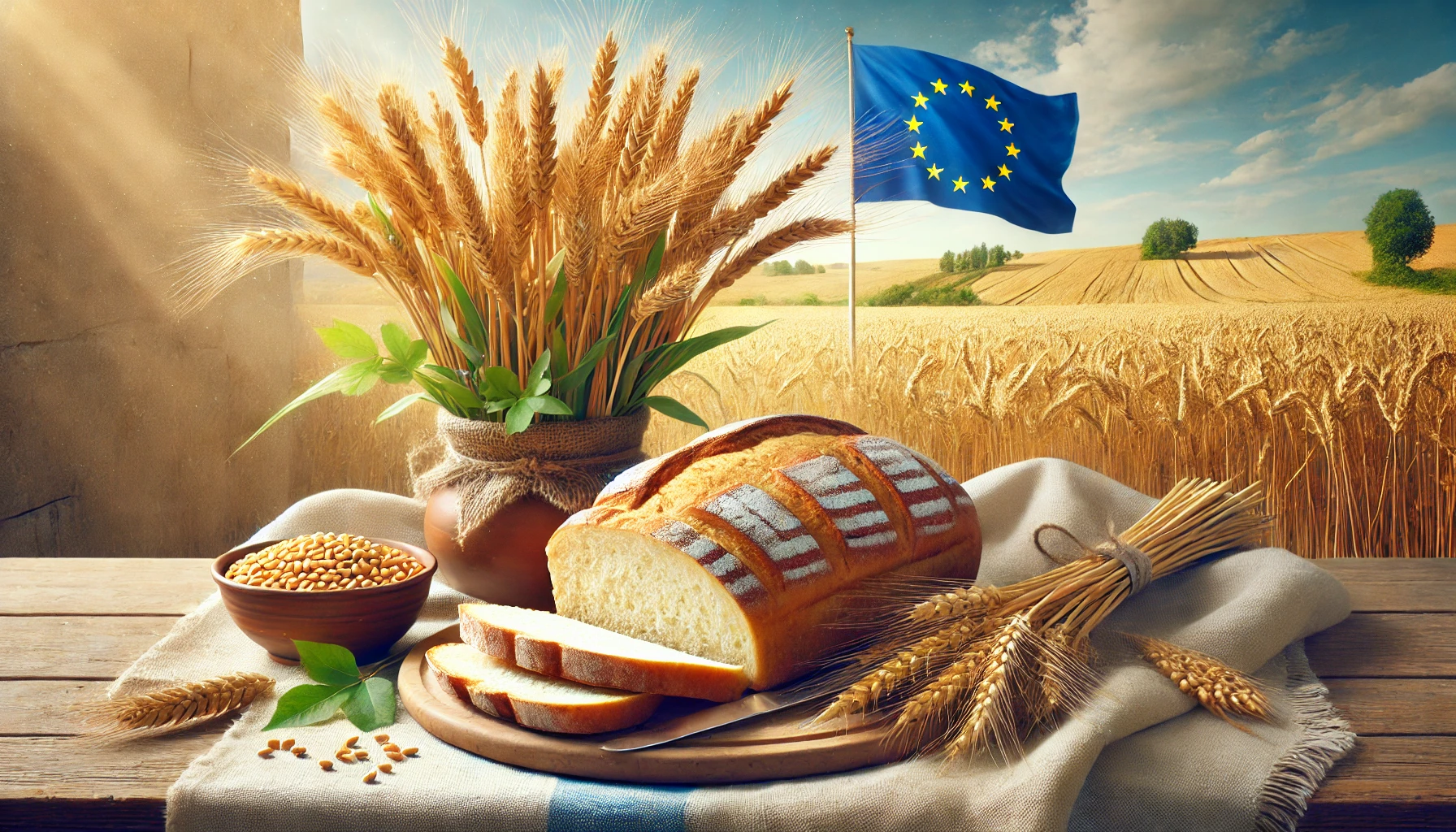Spoiler Alert: It’s what we do to the wheat here in the US that makes it fattening: the pesticides, additives and processing. In Europe, they keep it natural, which is way healthier, and less fattening.
You’ve probably heard it before:
“I ate all the bread and pasta I wanted when I was in Europe, but the second I touch wheat back in the U.S., I bloat up like a balloon and gain five pounds overnight!”
At first, it sounds like vacation magic—like maybe all the walking around historic cities is counteracting the carbs. But here’s the thing: it’s not in your head. European wheat really is different, and there are some solid reasons why you can scarf down a croissant in Paris with no regrets, but a slice of supermarket bread in the U.S. turns you into the Michelin Man.
Frankenwheat: The U.S. Supercharged Its Grain (and Not in a Good Way)
Once upon a time, wheat was just wheat. But then the U.S. got its hands on it and thought, “We can make this bigger, faster, more efficient and with a longer shelf life!” It’s what us American’s do. We’re the kings of making things bigger, faster and more profitable. And it worked. America has the highest yields per acre in the world. But at what cost?
Unlike traditional wheat, the U.S. primarily grows hard red wheat, which has a much higher gluten content than older varieties. More gluten means softer, more elastic bread, but it also means it’s harder to digest—especially for people who are gluten intolerant, line me. (note: this applies to Non Celiac Gluten Sensitivity (NCGS), not to those who have celiac disease). Meanwhile, much of Europe still sticks to heritage wheat varieties like einkorn, spelt, and emmer, which have lower gluten levels and a different protein structure, making them far easier for the human body to handle.
There’s actual science backing this up. Studies have shown that heritage wheat varieties tend to trigger less inflammation than their modern, high-gluten counterparts. So, if you feel fine eating a rustic baguette in France but like a bloated whale after eating an American sandwich, it’s not your imagination.
The Glyphosate Problem: America’s Love Affair with Roundup
If you’re wondering why American wheat messes you up even if you don’t have gluten intolerance, let’s talk about glyphosate, the active ingredient in Roundup. The U.S. does something particularly delightful (sarcasm alert)—it drenches wheat crops in glyphosate right before harvest to dry them out faster, making them easier to process.
Unfortunately, this means that by the time the wheat ends up in your bread, crackers, and pasta, it’s still coated in traces of glyphosate. There’s ongoing debate about the exact health effects of long-term glyphosate consumption, but researchers have linked it to gut microbiome disruption, inflammation, and—yes—potential weight gain.
Europe, on the other hand, has way stricter glyphosate regulations, and many countries have either banned or heavily restricted its use on food crops. So when you eat wheat products in Europe, you’re avoiding a lot of the residual chemicals that are likely wrecking your digestion in the U.S.
American Bread Is a Science Experiment, Not Real Food
Bread is one of the oldest, most basic foods in the world. At its core, it only needs flour, water, yeast, and salt. But in the U.S., that’s apparently not good enough.
If you take a look at the ingredients list of your average supermarket bread, it reads more like a chemistry project than something you’d want to put in your body. Preservatives, dough conditioners, stabilizers, emulsifiers—ingredients designed to make the bread last longer, rise higher, and stay unnaturally soft for weeks. Many loaves also have added sugar (or worse, high-fructose corn syrup) because apparently, Americans can’t be trusted to eat anything without extra sweetness.
European bread, by contrast, is simpler and more natural. Many European countries have strict food purity laws, meaning traditional bread is still made with just a few wholesome ingredients. On top of that, a lot of European bread is fermented longer (12 to 48 hours), which naturally breaks down gluten and phytic acid, making it easier to digest. This is why people who swear they can’t eat gluten in the U.S. often find they have no issues with a good old-fashioned French baguette.
Blood Sugar Spikes: How American Wheat Triggers Fat Storage
Here’s the thing about wheat: not all of it affects your blood sugar the same way. American wheat, especially in its refined form (hello, white bread and cheap pasta), has a super high glycemic index (GI). That means it spikes your blood sugar fast, triggers an insulin response, and tells your body to store fat.
European wheat products—especially sourdoughs, whole grains, and traditionally fermented breads—don’t hit the bloodstream as aggressively. They digest more slowly, keep blood sugar levels stable, and don’t cause the same insulin spike-and-crash that leads to weight gain. That’s a major reason why people can eat pasta in Italy without feeling like they need a nap afterward.
Size Matters: The American Obsession with Super-Sized Portions
Let’s be honest: Americans go big on everything, including their food portions. You order pasta at an average U.S. restaurant, and they bring you a bowl big enough to feed an entire Italian village. And don’t even get me started on the bread baskets at chain restaurants—one minute you’re “just having a bite,” and the next, you’re in a carb coma.
Europeans, meanwhile, tend to serve normal-sized portions. They eat their wheat as part of a balanced meal—bread alongside cheese and olives, pasta with fresh vegetables and lean proteins—not as the main event. Portion control matters. Even the healthiest wheat won’t do you any favors if you’re shoveling it in by the pound.
So, Is European Wheat Actually Less Fattening?
In short—yes. But not because it has some magical carb-neutralizing properties. It’s because:
- The wheat itself is different (less gluten, fewer inflammatory proteins).
- It’s not drenched in glyphosate before harvest.
- The bread is made with fewer additives, preservatives, and weird chemicals.
- Portions are smaller, and meals are more balanced.
- The blood sugar impact is lower, meaning less insulin-driven fat storage.
If you want to enjoy wheat without feeling like a bloated mess, try making a few changes. Buy organic, non-GMO, heritage wheat varieties like einkorn, spelt, or emmer. Go for real sourdough. Skip the ultra-processed supermarket bread. And, most importantly, don’t eat wheat-based foods like they’re an all-you-can-eat buffet.
Because at the end of the day, it’s not really gluten that’s making you fat.
It’s US Frankenwheat!!! . :-/







0 Comments